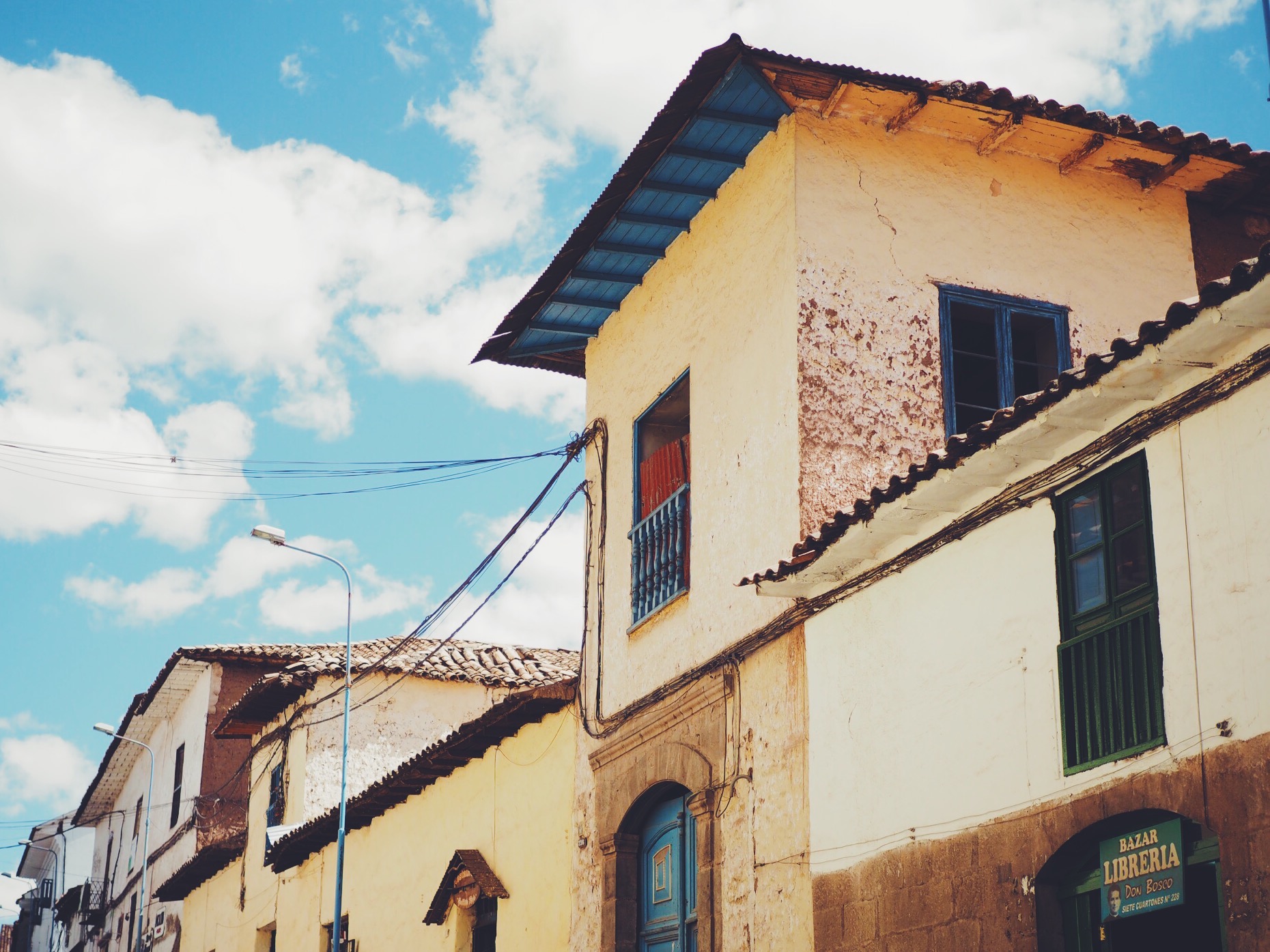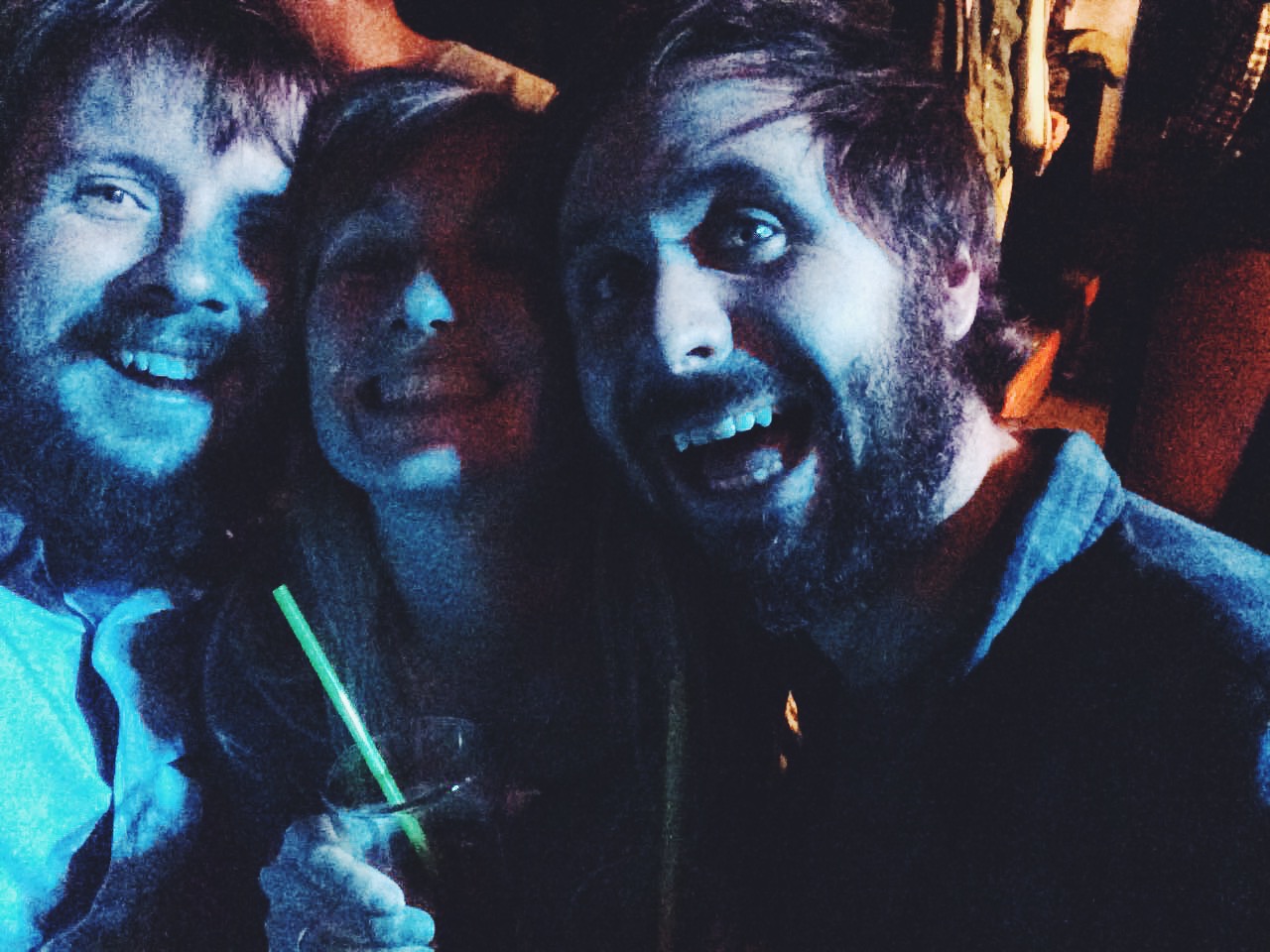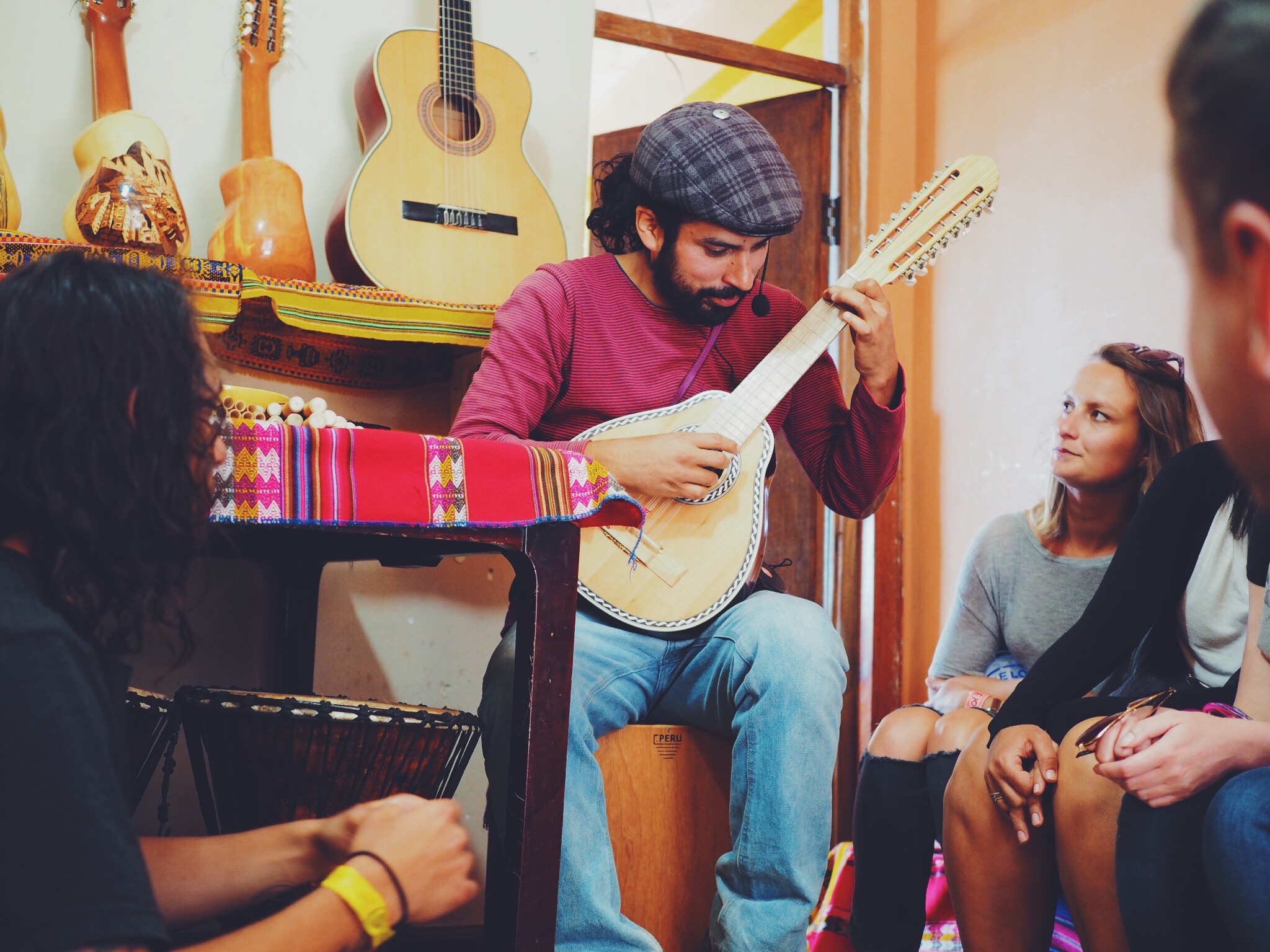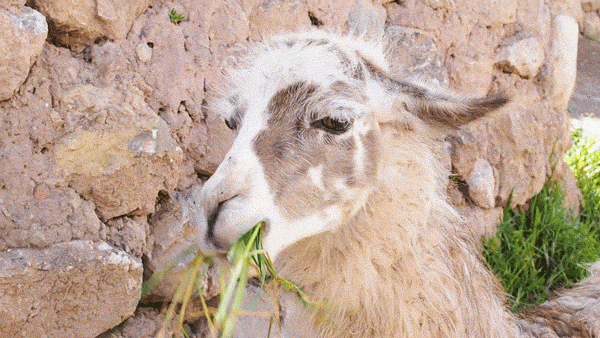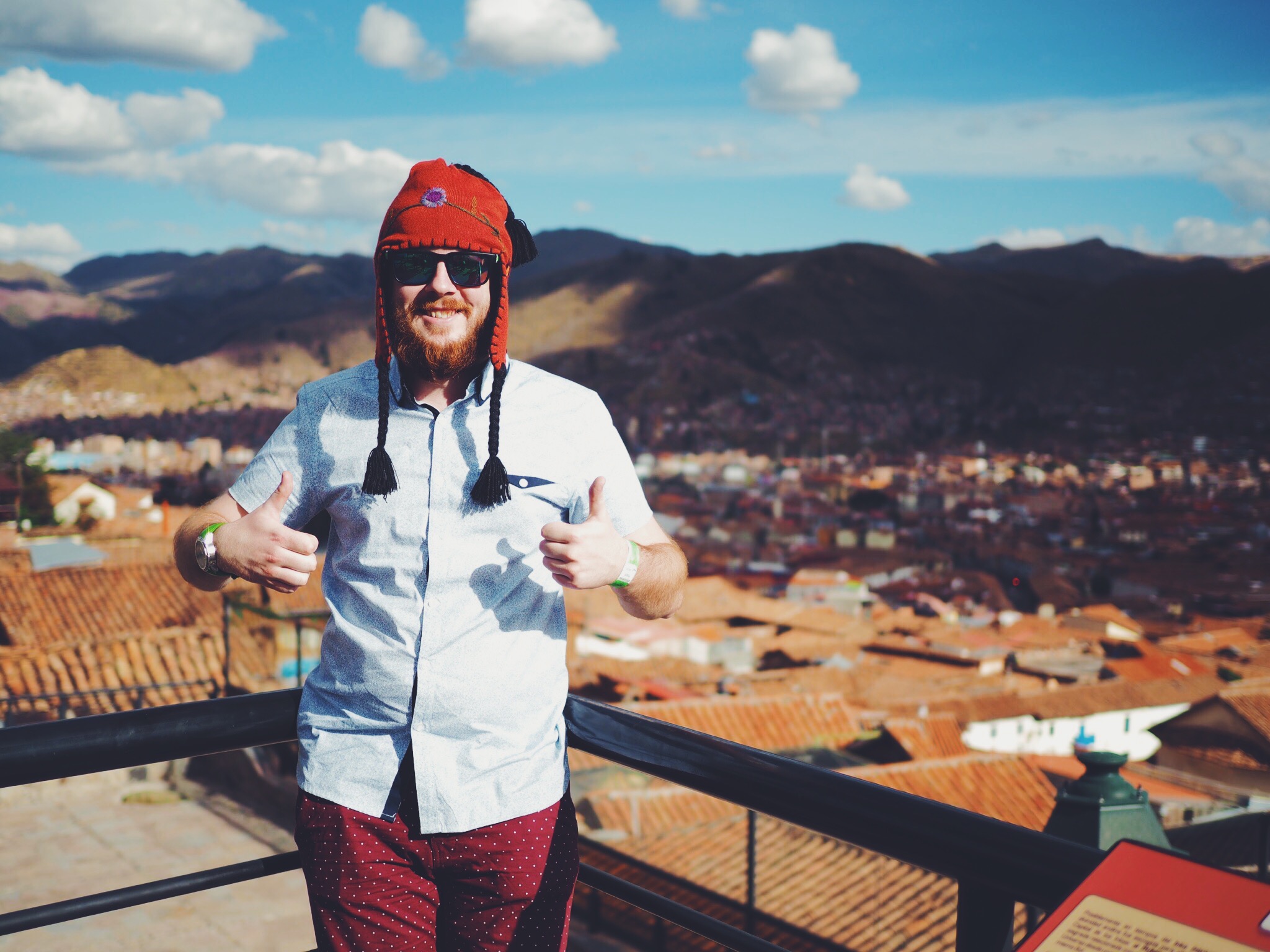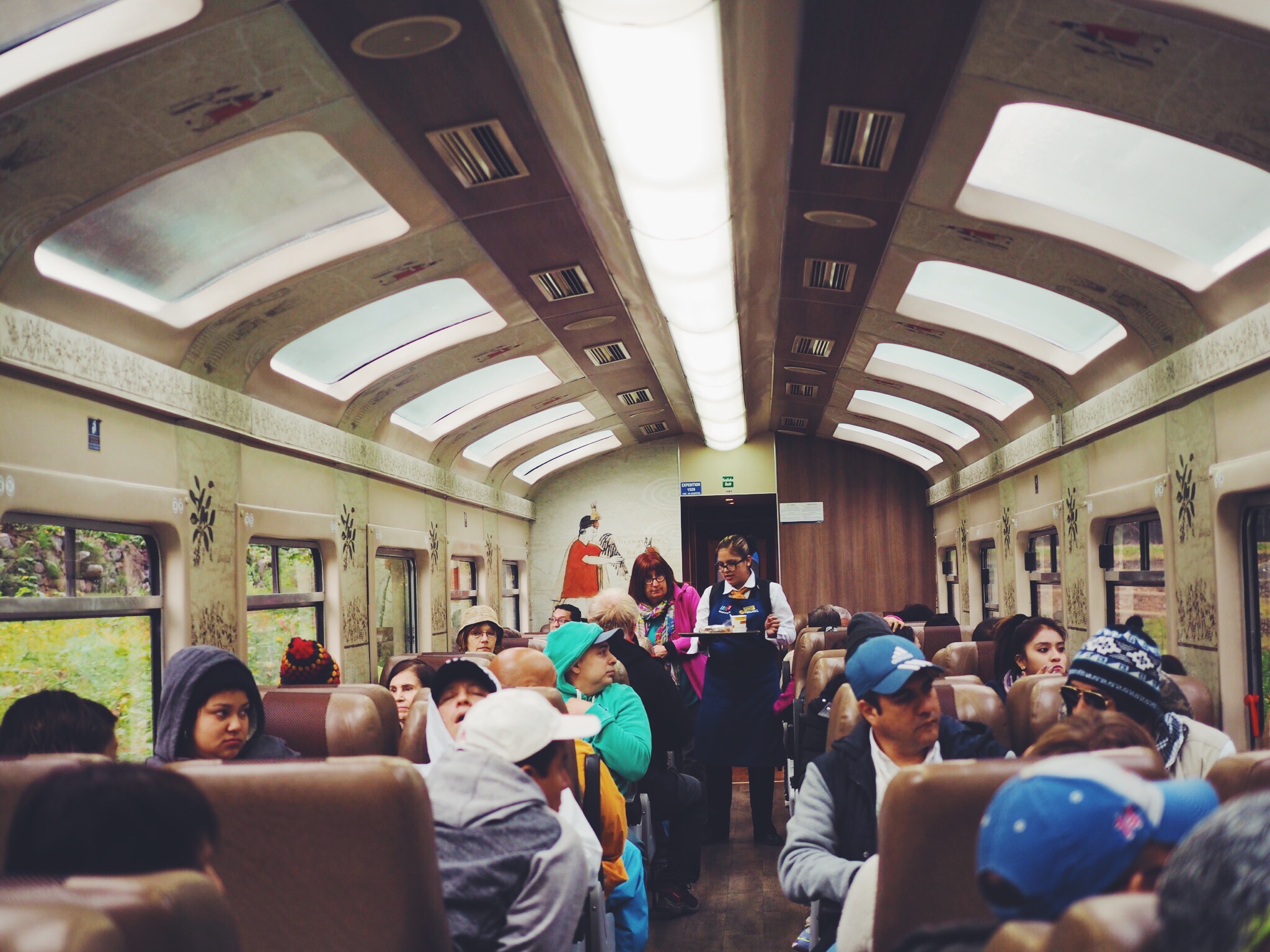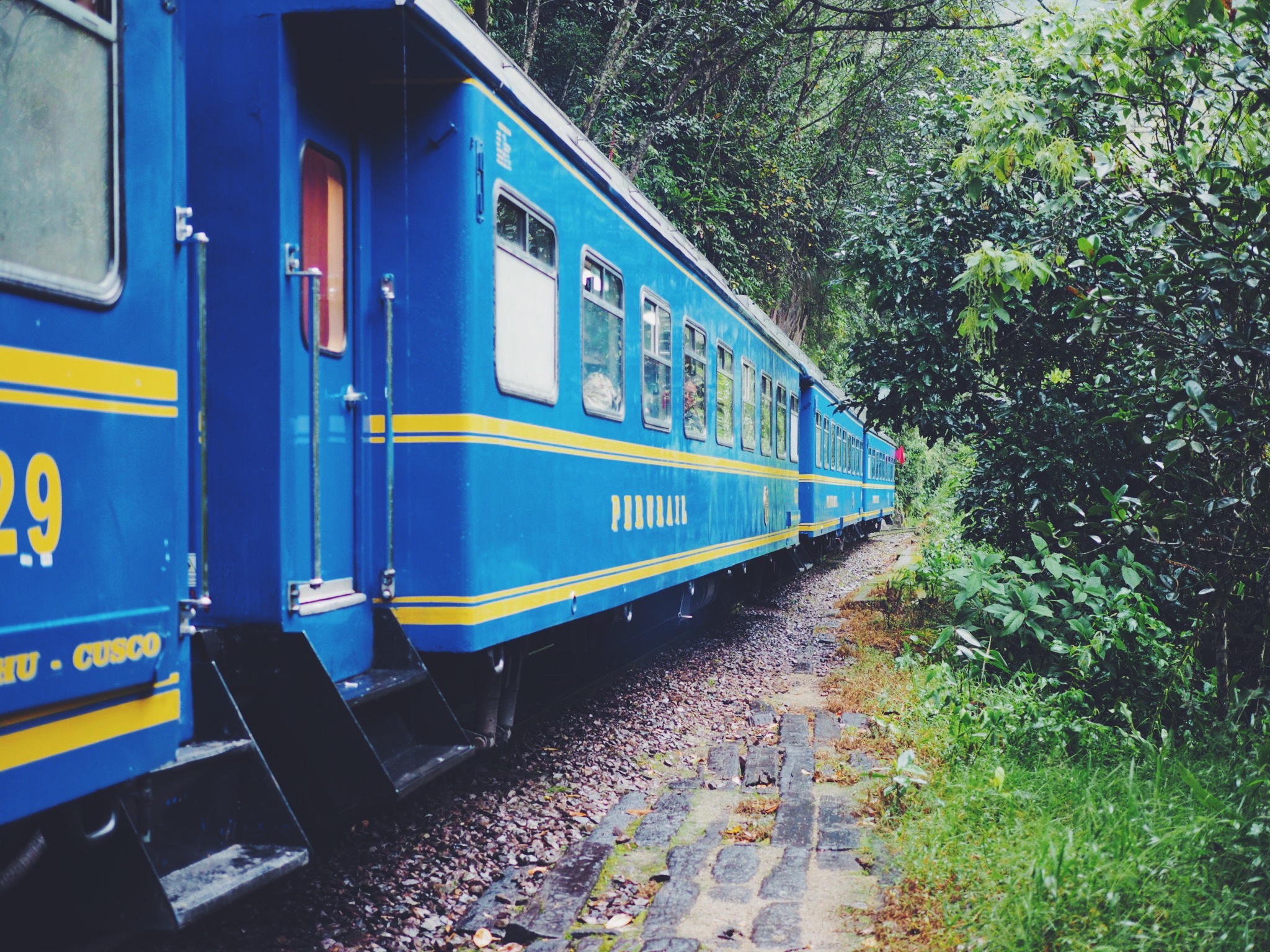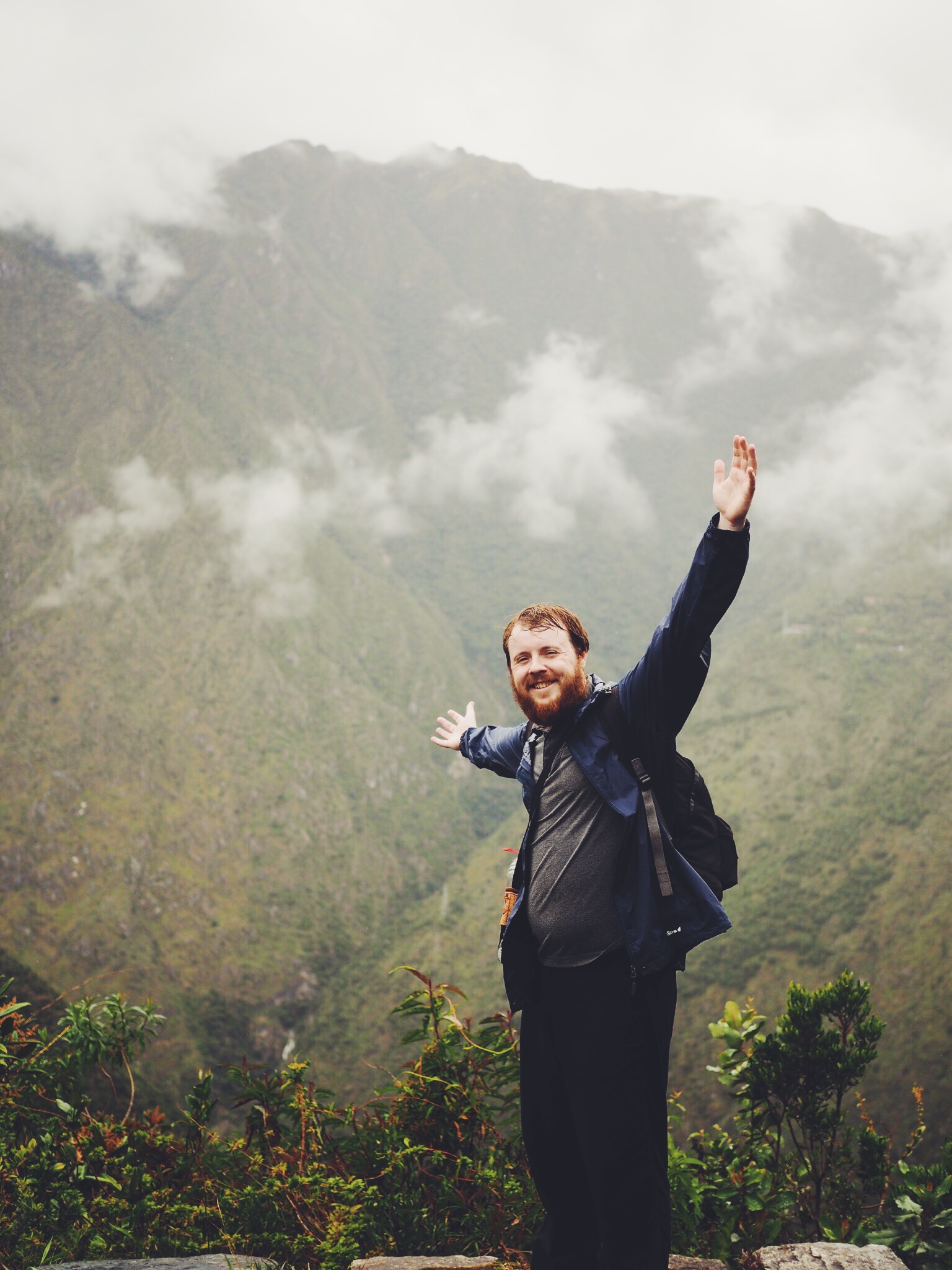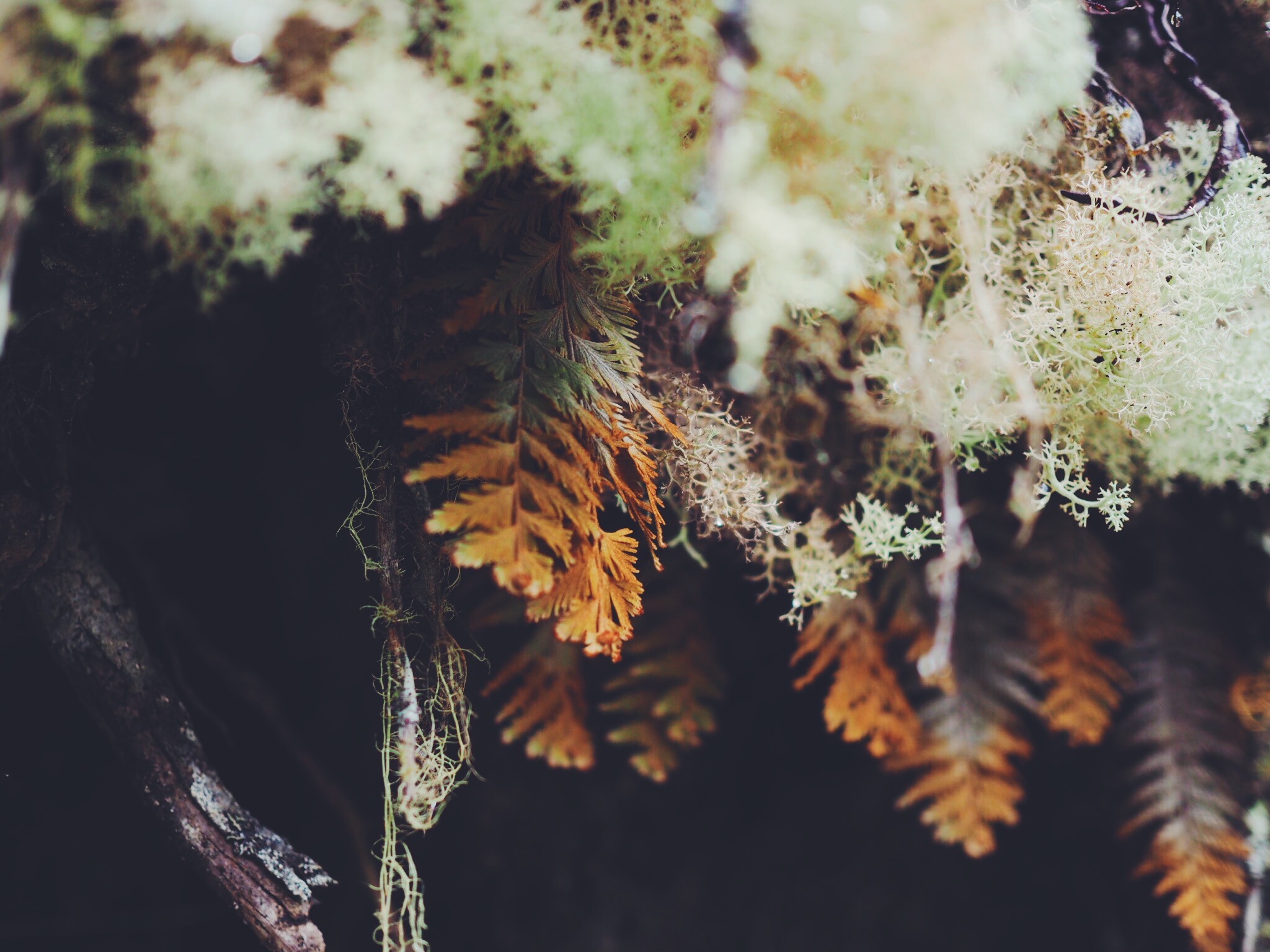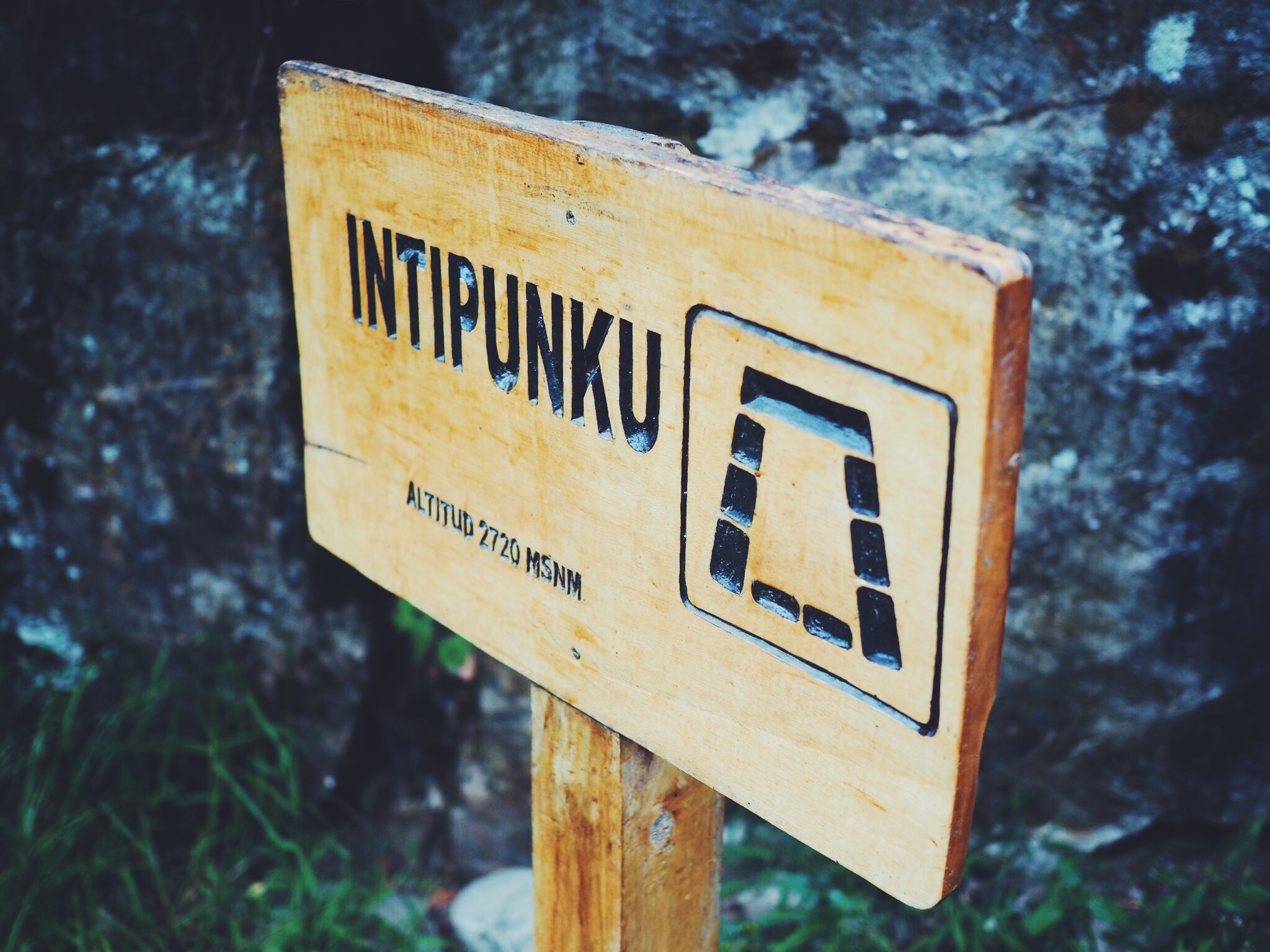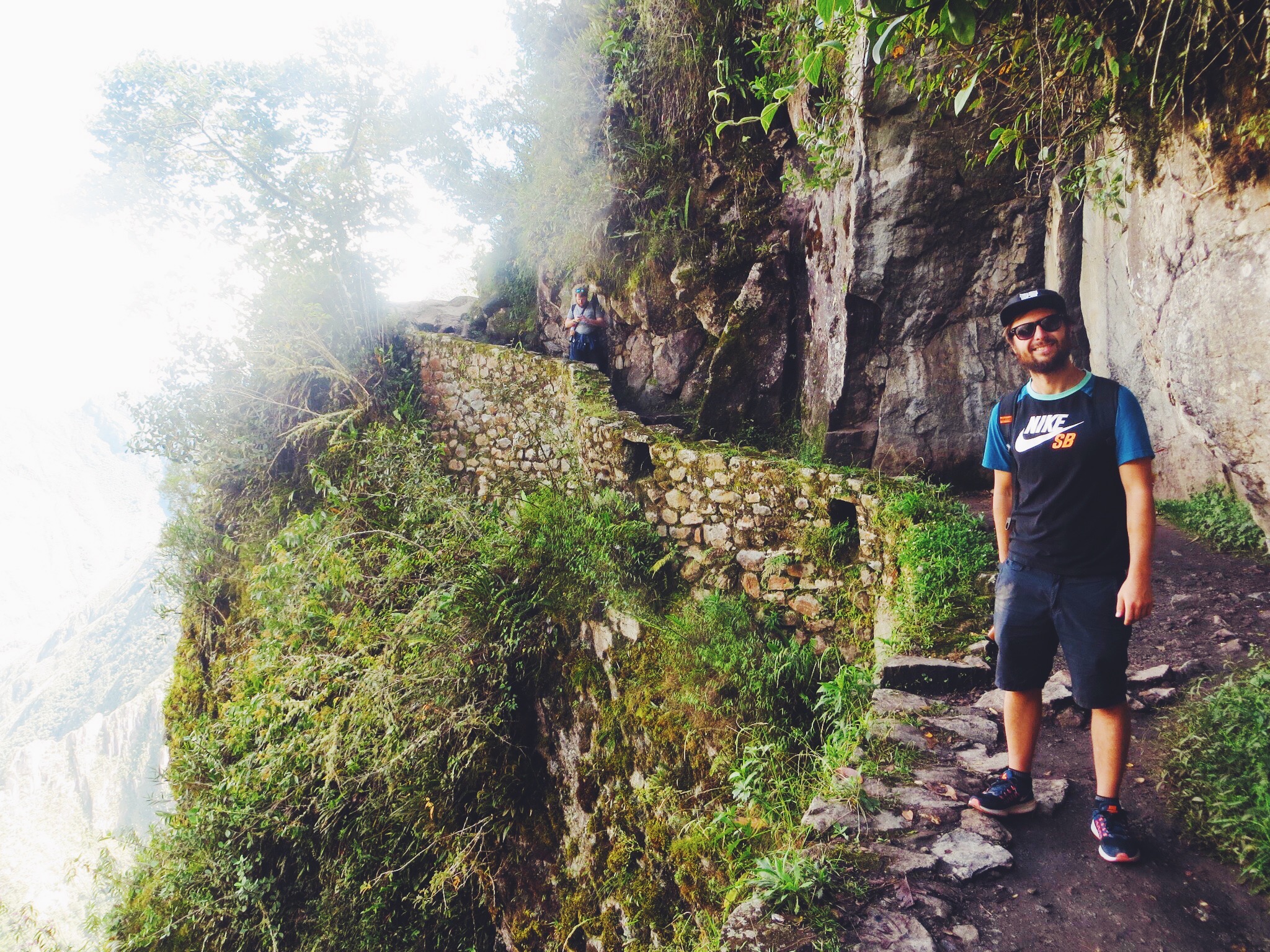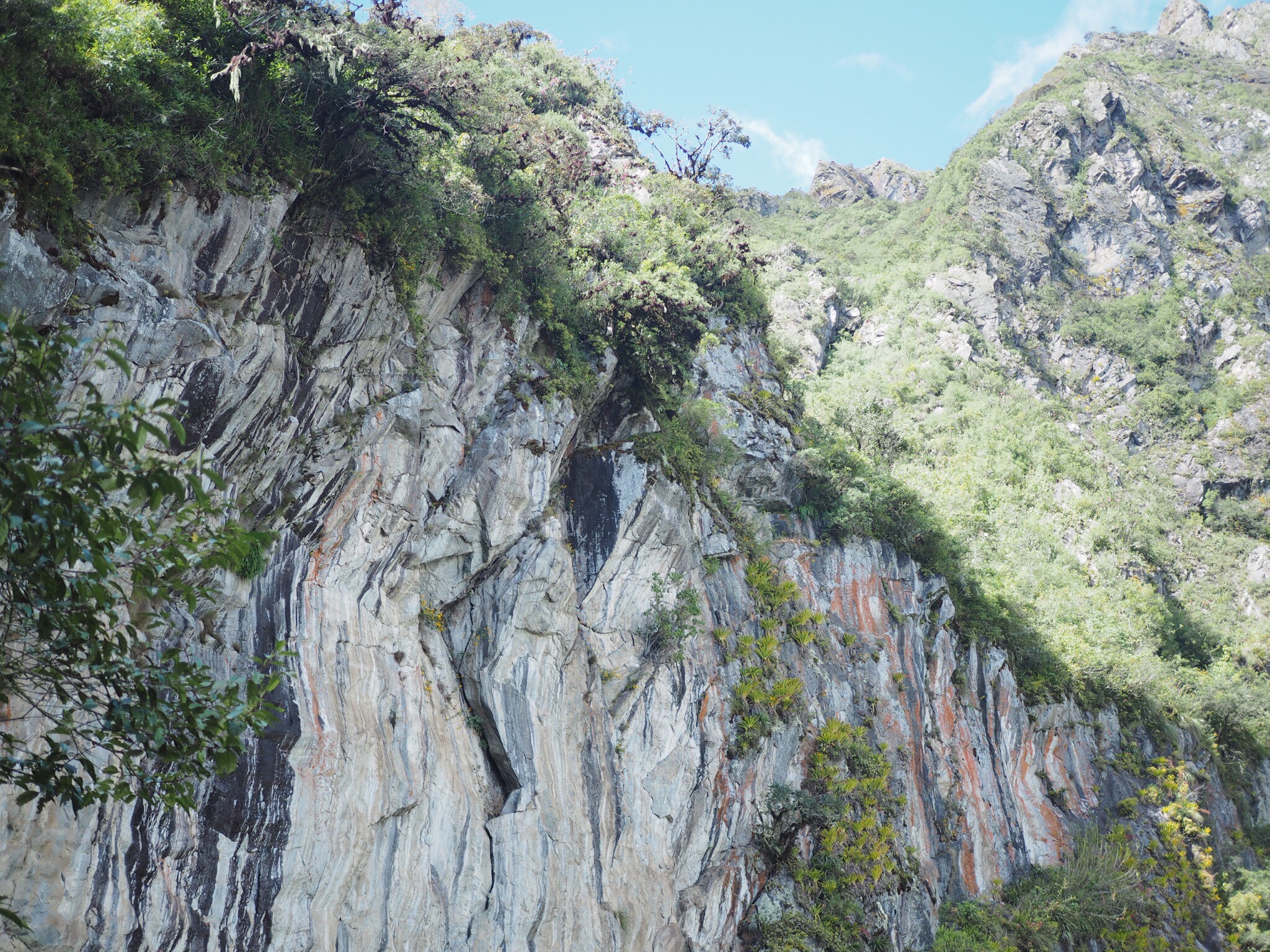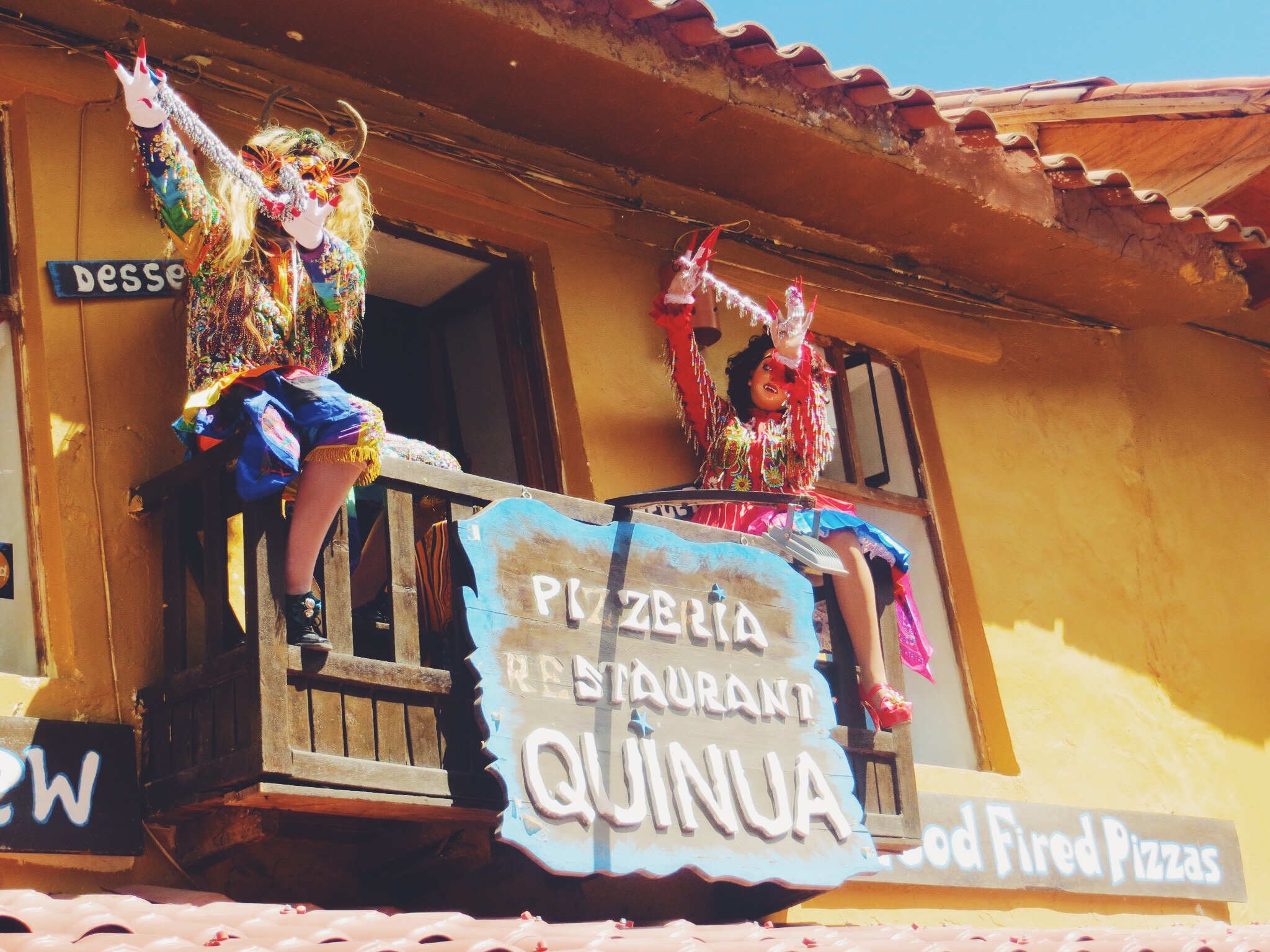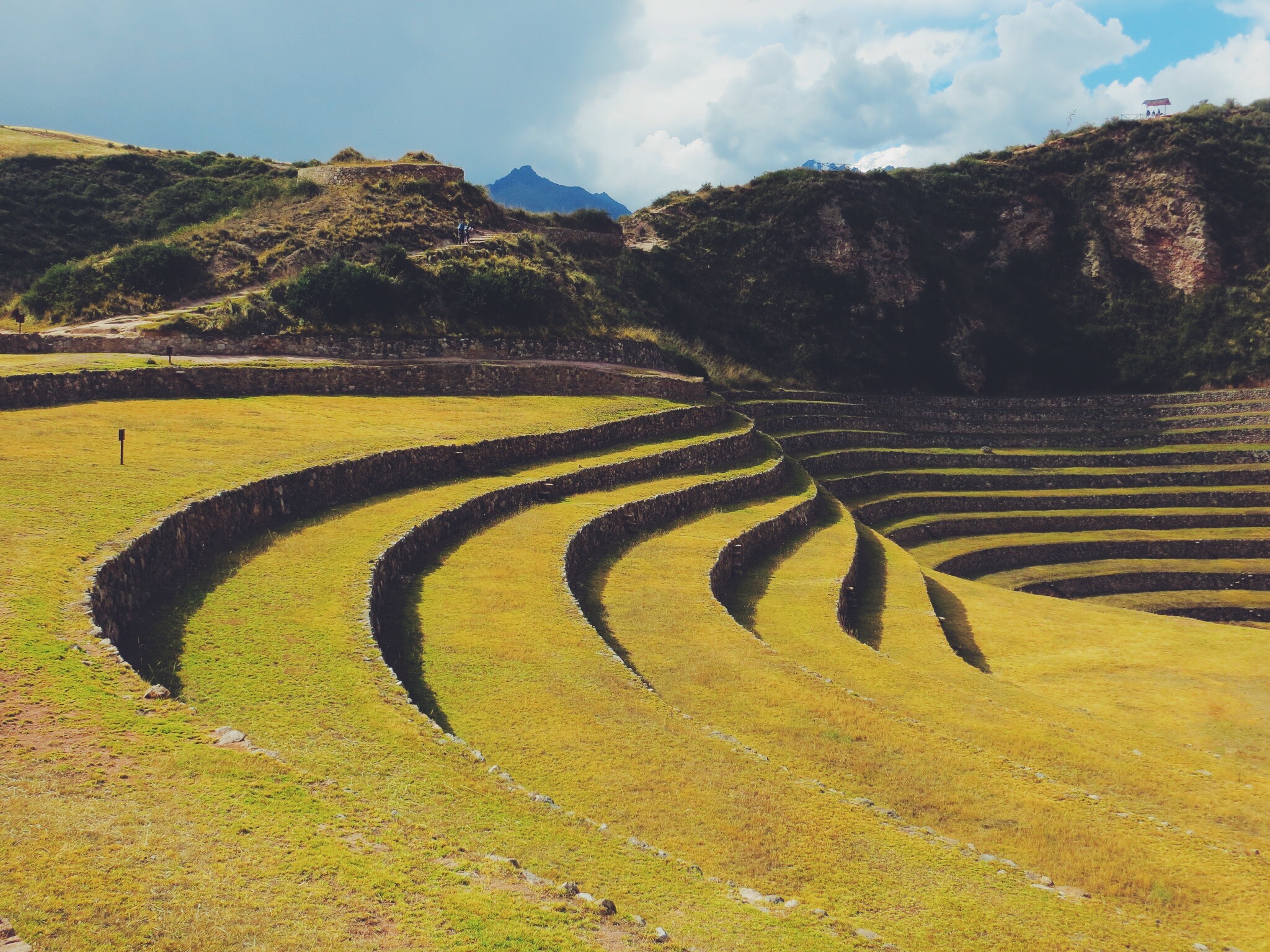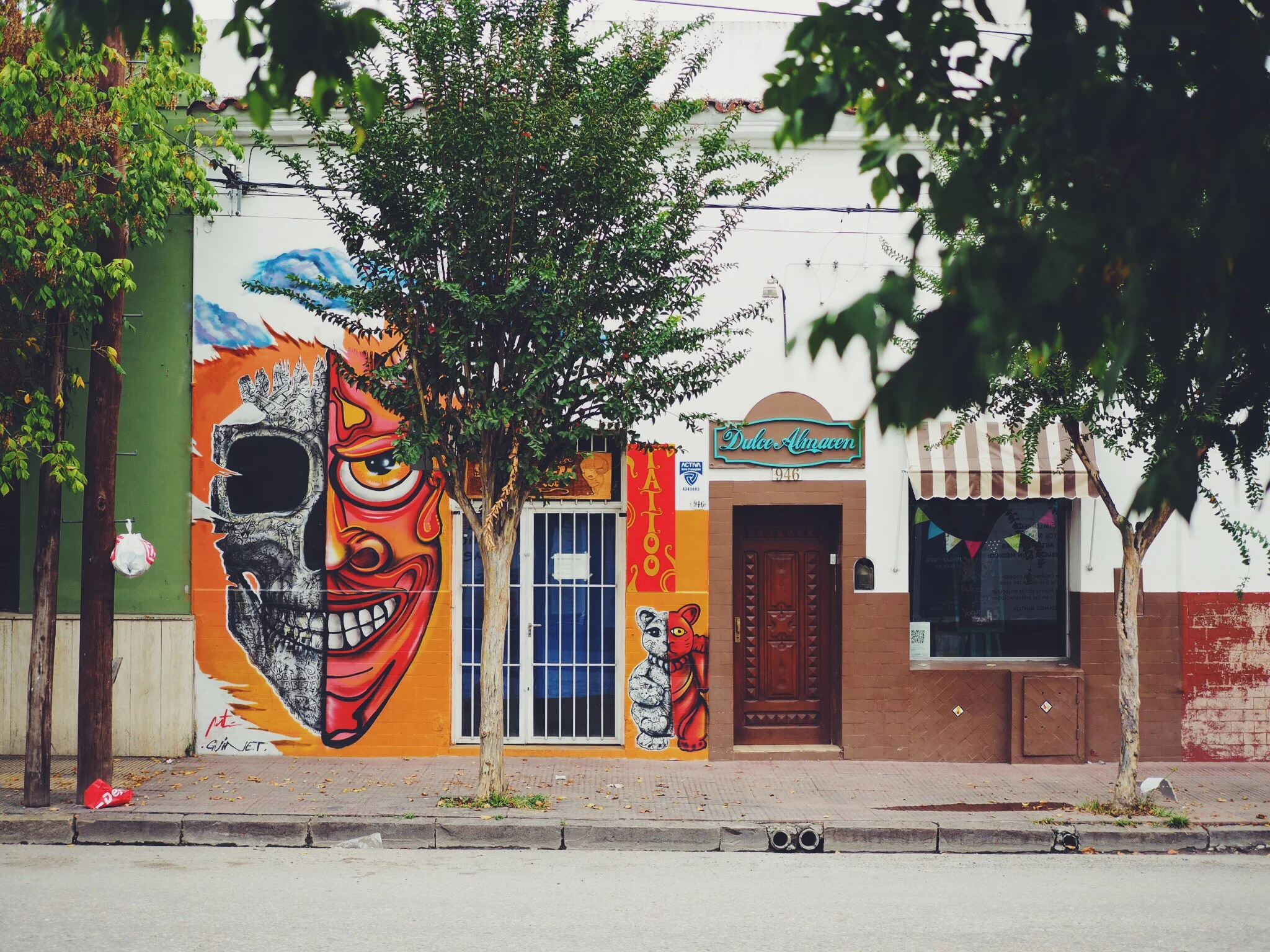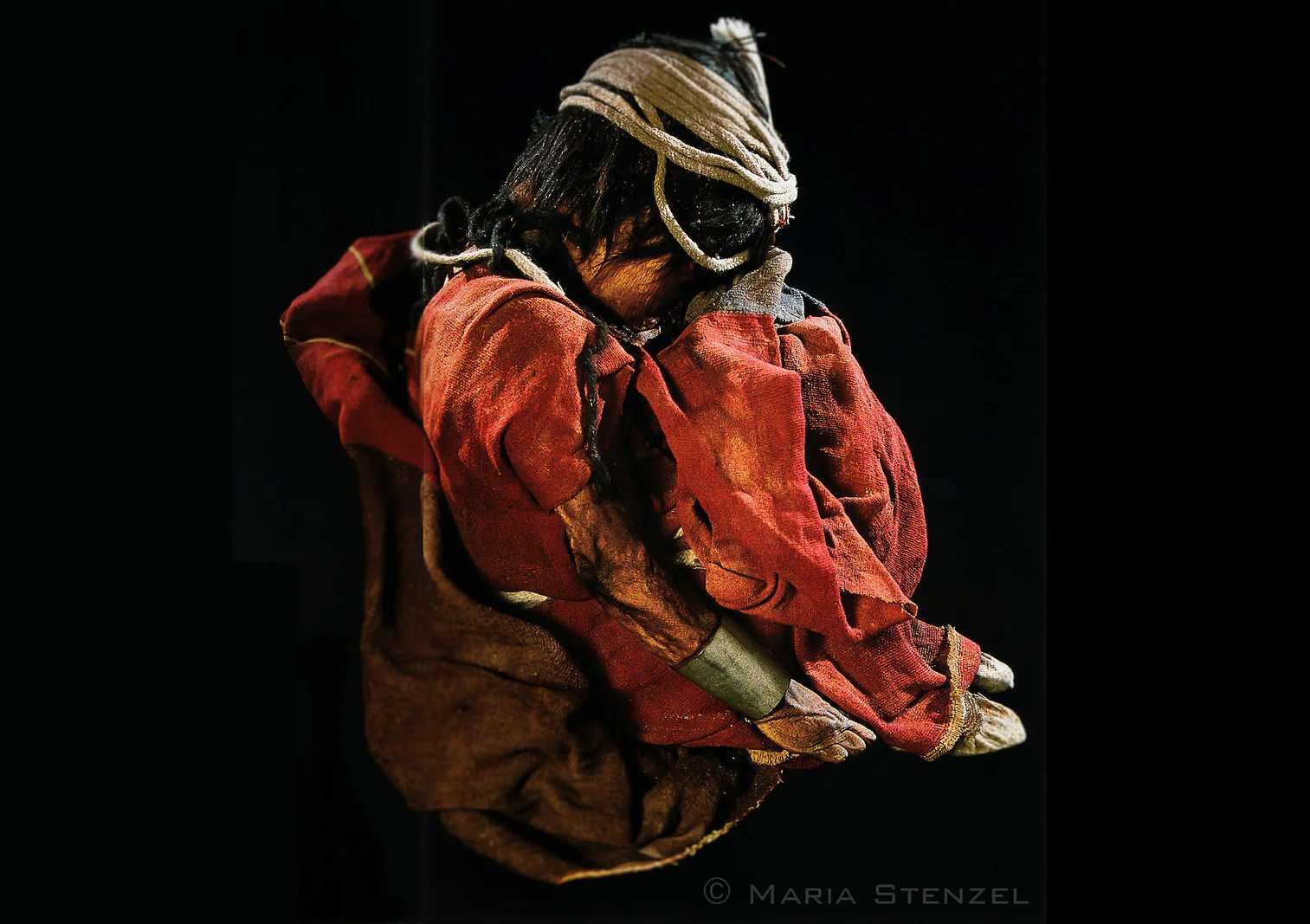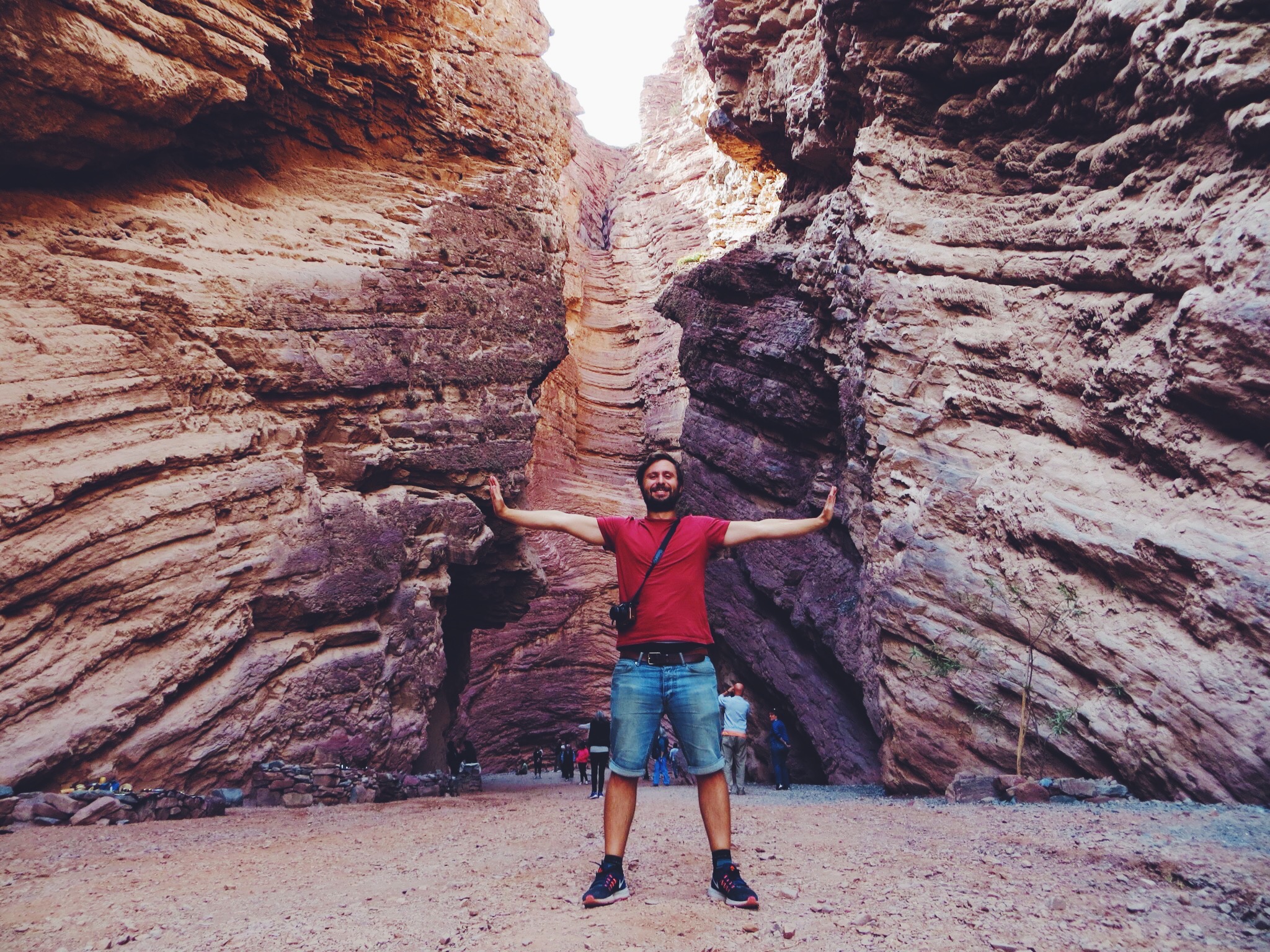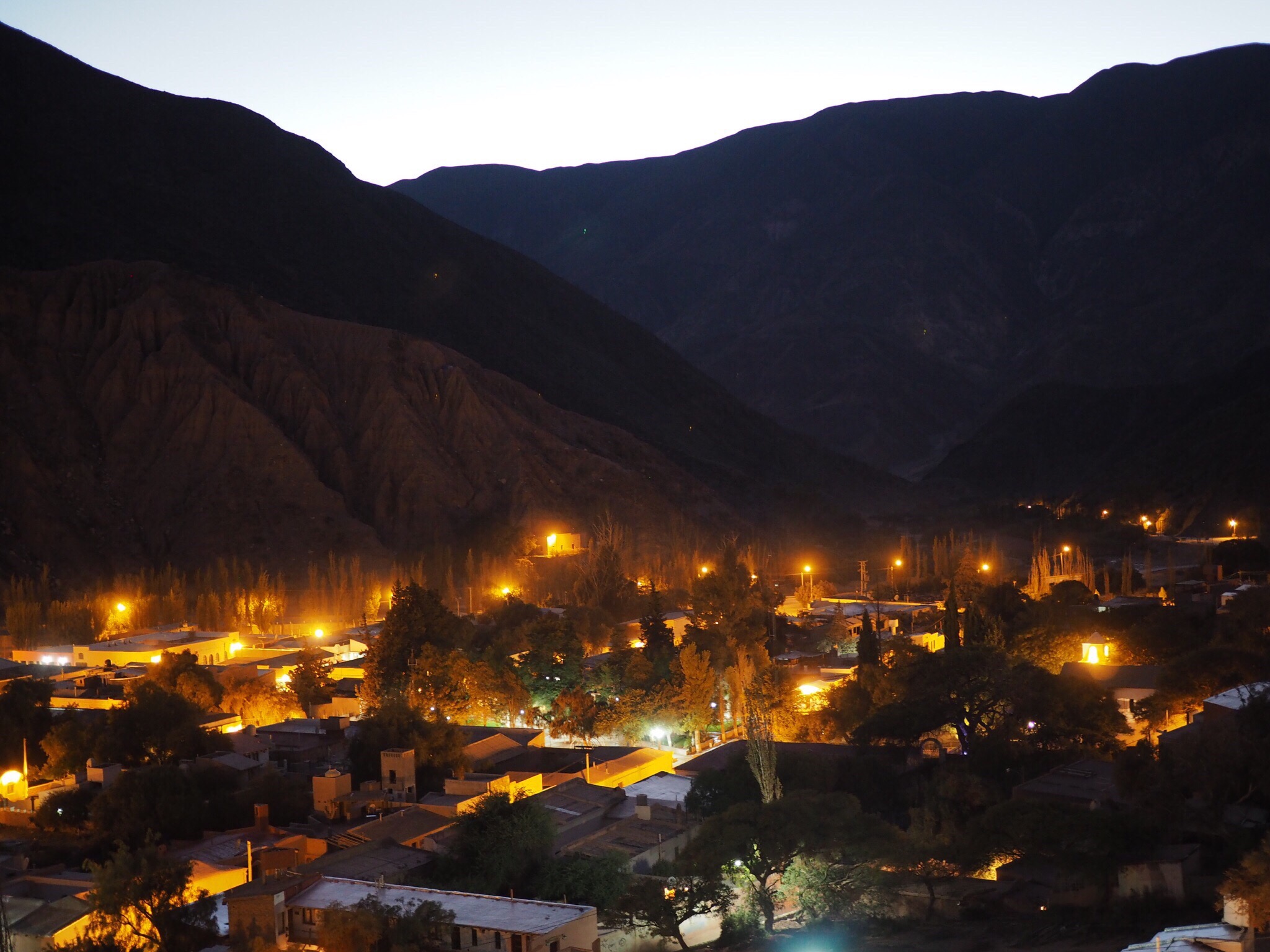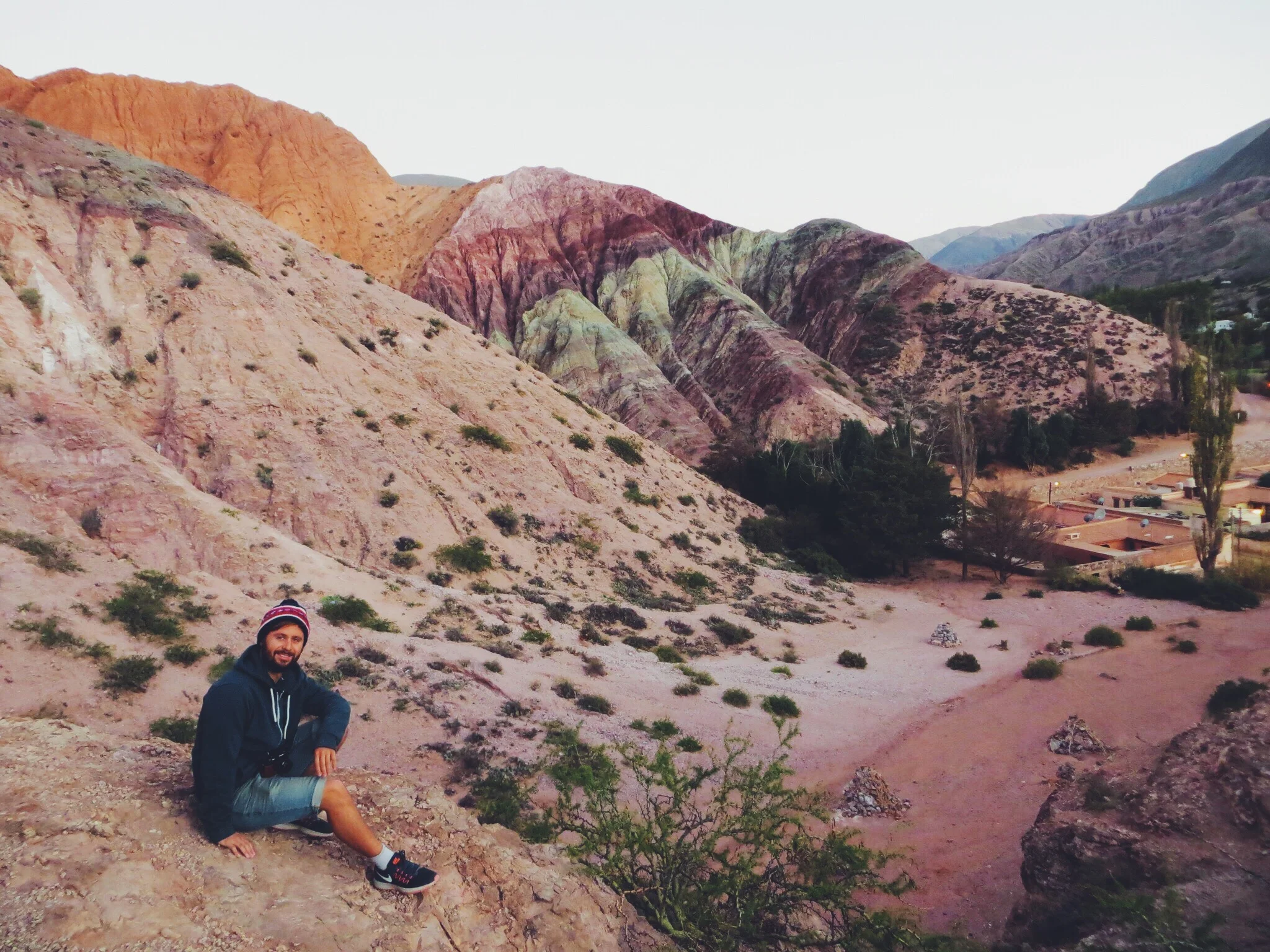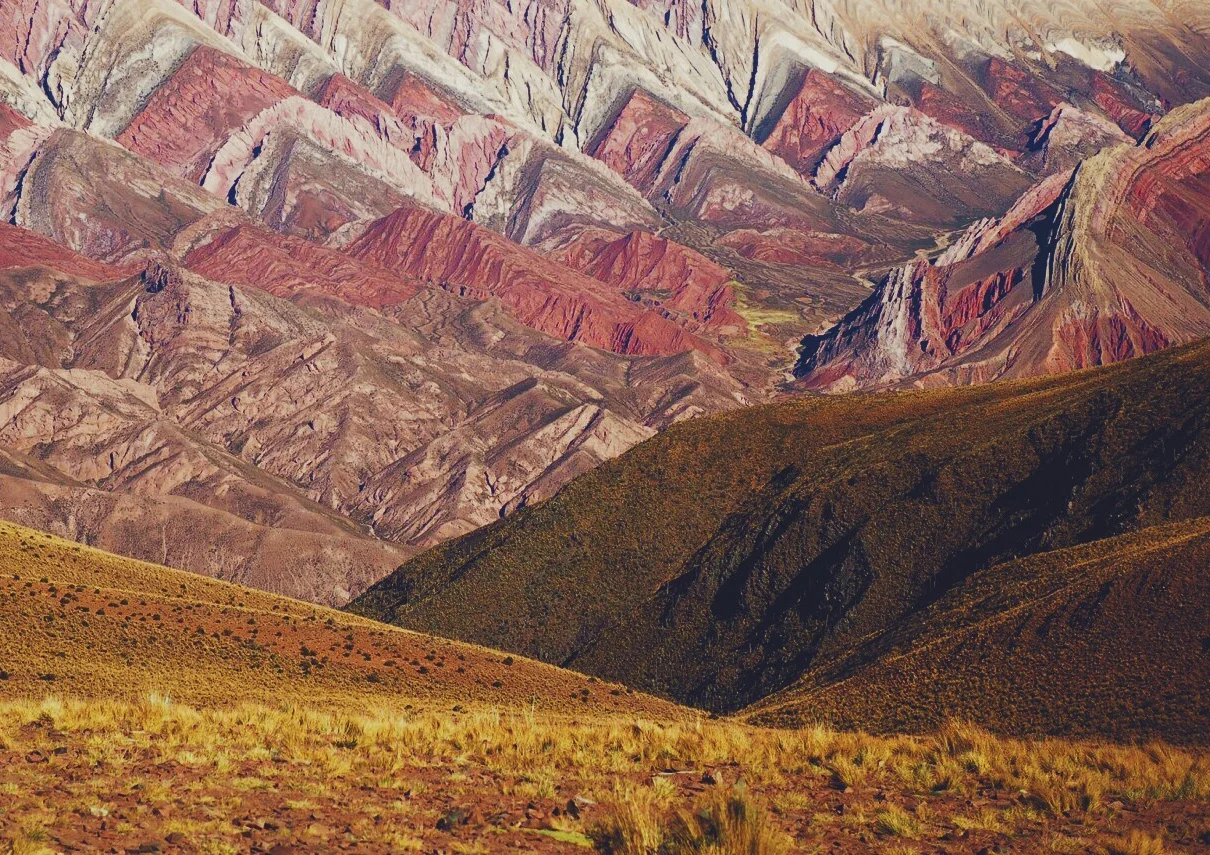Machu Picchu and Sacred Valley
Machu Picchu marked the half-way point of our travels around South America; 120 days since leaving London behind. Arguably one of the most famous ruins in the world, and situated in the stunning Urubamba River valley, there's a reason why it's on a lot of travellers bucket list. The ancient city of Cusco is the gateway to the world-renowned Inca Trail, and having heard great things about it we decided to stay there for 3 nights to explore the city before our trek. Unfortunately, 5 months in advance was still too late to book the full inca trail (to our annoyance) and so we settled for the 2 day mini-trek, which we were excited about none-the-less. We were also keen to visit the Sacred Valley, a region filled with various archaeological sights and small villages, and so we planned a few key stop-offs on the journey from Machu Picchu back to Cusco.
Cusco
After getting a 7 hour night bus from Puno we arrived in city's main bus terminal at about 6am, and still feeling pretty tired we got a cab to our hostel for a few more hours rest. As our friend Tom from London was joining us for a couple of weeks, we decided to stay in the popular Pariwana Hostel, conveniently located in the city centre and boasting a pretty decent bar/restaurant and a ping pong table in their large courtyard. After showering and settling into our dorm, we decided to have a quick explore of the old city centre before Tom arrived. Our first port of call was the beautiful old Plaza de Armas square surrounded by Santa Domingo Cathedral, La Compañia Church and various other Spanish Colonial buildings.
As we had acclimatised in Bolivia, the lower altitude in Cusco didn't affect us, and so once Tom arrived early afternoon (also unaffected by the altitude) we decided to take advantage of this and get stuck into some pisco sours. We then headed to Uchu Peruvian Steakhouse to sample alpaca steaks cooked on volcanic stones. The food was brilliantly presented, and the surf and turn option allowed us to try both the shrimp and steak cooked on hot stones at our table. The highlight was the desert, entitled 'chocolate madness' consisting of 3 amazing chocolate deserts including mouse, truffle and fondant. It was the best desert we'd had in South America and was eaten embarrassingly quickly by the three of us! From there we headed to a string of clubs including the popular 'Chango', turning it into a very fun and messy night!
We woke up the following day with pretty bad hangovers (we had definitely lost our alcohol tolerance since travelling!), and after recovering over breakfast at the hostel bar, helped by plenty of fruit juice, we decided take the free walking tour of the city. The tour started in the main square, where our friendly guide explained some of the history of Cusco, the capital of the Inca Empire and the oldest existing city in South America. He explained how many of the Inca temples and buildings had been destroyed and built over by the Spanish during their colonisation. It was interesting to hear how the two religions (Catholic and Inca) compromised both spiritually and culturally in order to keep peace once the Spanish had arrived.
The group got a minivan to the top of the Pukamoqo hill, and within 5 minutes we had completely left the built-up streets of Cusco behind and arrived in the rural outskirts. At the top was the Cristo Blanco, a large white statue that ‘watches over’ the city. We also got a glimpse of Sacsayhuaman, an ancient inca fortress that overlooked the city. We then headed to a textile shop where a local lady demonstrated the colouring and weaving techniques used to create traditional Peruvian fabrics. She showed us the plants, spices and even insects that are used to create the various pigments in their colourful textiles.
After the demonstration we headed back to San Blas, the boheniam district of Cusco to a small music shop where our guide played some traditional instruments including the charango, a small guitar made from an armadillo shell. We then walked through the San Blas area, taking in the beautiful cobbled streets, intricate balconies and small handicraft stores. The tour finished at Limbus Resto Bar for some food and a Pisco sour tasting session with great views of the city. We felt the tour gave us a great introduction to Cusco, and showed us some interesting places we otherwise wouldn’t have visited.
On our final day we decided to go for lunch at Marcelo Batata, boasting one of the best roof-top balconies in the city and with highly rated (although a little expensive) food. We opted for appetisers only to keep the price down, but all our dishes were beautifully presented and equally delicious, and as we basked in the sunshine we sampled the regional beer (Cusquena) as we looked out over the picturesque rooftops of Cusco. It was a perfect lunch time spot! We then headed back to pack for our 2 day inca trail, and after 3 days in the city we felt ready to hit the fresh air and finally see the world-renowned Machu Picchu.
Inca Trail Day 1
The day had finally came for our much awaited 2 day Inca trail. We were picked up from our hostel at 4am, and bundled into a rather bumpy minivan to the train station to board the train at Ollantaytambo at 6.10am. As we were picked up about 20 minutes late it felt as if we only just made the train on time, and being one of the most expensive train rides in the world we definitely couldn't miss it! After boarding we were given breakfast, tea and coffee and began our journey through the incredible Peruvian mountains, following the river Urubamba River until we reached 'kilometre 104' where we had to disembark. We jumped off the train with our day bags, and waited for the train to leave before setting off.
Much to our luck, it had started to rain heavily just as we set off. We decided to not let it affect our spirits, and so once we were as soaked through as is physically possible (we should have brought rain ponchos!) we ignored the wet and focused on enjoying the amazing misty scenery as we trekked up the Inca stairway through the cloud forest. Following our guide, we hiked up the ancient stone steps, being careful with our footing as the drops were pretty sheer.
During our route our guide explained about some of the native plants that were used by the Incas, as well as the importance of water in the Inca culture, and that we should be thankful for the rain as it symbolised life! Over the next few hours we wound our way along the mountain ledges to some breathtaking scenery that either looked out over the amazing valley or led us through more jungle-type surroundings with fast-flowing rivers and waterfalls.
Another thing that made our trek special was that that we were almost completely alone with our guide on the trail for the entire time. Although we would have loved to have completed the full 5 day trek, we had heard was that it was often very crowed on the trail, and having this spectacular scenery to ourselves was not something we had not expected, and we felt very lucky to be able to experience it in such a small, personal group.
Around mid day the rain began to ease up, just in time for lunch and our visit to the amazing Winaywayna ruins, a series of inca farming balconies cut into the near-vertical mountain side. Our guide explained various historic features of the ruins that were specific to ancient Inca culture, including the incredibly sophisticated water system, the 'niches' (sacred storage) in the walls, and the exact positioning of certain windows that were used as astronomical calendars through the position of the sun. It was an amazing place, and so nice to see it with hardly any other trekkers there. After an hour or so of exploring the ruins we climbed our way up to the top to get the best view before continuing our trek.
After another hour or so of walking we arrived at the Sun Gate, or Inti Punku, a door that was once the main entrance to Machu Picchu and the top most view of the ruins. Due to the rain, Machu Picchu was mostly covered in cloud, and we only managed to get a small glimpse of the ruins before descending to the bottom. Our guide explained that the iconic mountain seen in the typical photos of Machu Picchu is actually Huayna Picchu mountain (not Machu Picchu which is a common misconception).
We walked through the ruins for an hour or so, but as it started to rain heavily again (and we were feeling pretty soggy!) we decided to head back and wait until the following day to do the detailed tour. As we approached the bus bay we realised everyone had the same idea, and a huge queue had formed, meaning we had to wait for a not-so-fun hour and a half to get the bus to Aguas Calientes. In hind sight we can laugh how unlucky we'd got on our first day, but at the time it was pretty miserable!
Once we arrived at Aguas Calientes, our bags and their contents were completely soaked through, so after checking into our hostel we sent all our clothes to the launderette, had a hot shower and tucked into the decent dinner provided by our hostel. There wasn't a huge amount to see in Aguas Calientes, and so we grabbed a few cold beers after dinner and relaxed in the warm hostel and prepared for another early start the following day.
Inca Trail Day 2
When we woke the following day we were relieved to find a perfect blue sky, and were excited (and a little anxious) to get to the top of Machu Picchu again to see it properly. We had learnt that the weather can be very changeable there, and so managed our expectations until we got off the bus at 9am. We were thrilled to see it was still clear, and we spent the first hour marvelling at the historic ruins from various angles, getting our stereotypical pictures along the way. The ruins really lived up to our expectations, with cascading balconies, blue sky, and the occasional wisp of white clouds and mist. It was a truly magical setting.
Our guide then began explaining in detail the main features of the ruins. He showed us the different types of rooms, including rooms for cooking and storage, rooms for royalty (with larger doorways) and temples, which had a different kind of doorway to indicate it’s religious significance. We also learnt about the inca trinity: three sacred animals that represent the earth, the sky and underworld. According to the incas, the puma shows patients and strength on land, the condor is the only animal that can fly high enough to communicate with the heavens, and the snake travels to the underworld when it sheds its skin. All three symbolise the circle of life, and throughout the tour we were shown many references to them, both iconic and metaphoric, including a hidden puma that had been cleverly formed from the gaps in a huge stone wall (you'd be forgiven for not spotting it though!)
After an informative 2 hours from our guide and exploring the majority of the ruins of Machu Picchu we walked to the inca bridge, a now closed-off pathway across a treacherous, narrow ledge with sheer drop that links up another ruin on the other side of the hill. Tourists are no longer allowed to walk across it as it's too dangerous, but it was interesting to see the risks the inca's took to build and connect their settlements. We then headed back down the hill to catch our bus back to Aguas Calientes, picked up our bags and jumped on the train towards the Sacred Valley, still reeling from how incredible our visit had been.
The Sacred Valley
After our trip to Machu Picchu we had decided to visit the Sacred Valley on our way back to Cusco, stopping off at the circular balconies of Moray, and the impressive Salinas de Maras, a salt mine built into a mountain side. We got off the Peru Rail train at the small town of Ollantaytambo, about 80 km from Cusco. It was dark when we arrived, and so made our way to La Casa del Abuelo Riverside, a hostel we had booked a few days earlier. By chance we had arrived during a festival weekend in Ollantaytambo, and as fireworks, music and dancing were kicking off we decided to check it out. After witnessing a comically dangerous firework display in the main square, we headed to Mayupata Restaurant to sampled some of the local cuisine including alpaca, Peruvian rice pudding and a glass of Chicha, a sweet purple corn based beer.
The following day we work early for our hostel breakfast of scrambled eggs and bread (a South American Classic) and made a plan for the day. Our first stop was to visit the ruins of Ollantaytambo, and so we strolled around the fortress overlooking the town for an hour or two, seeing familiar inca architectural features that we recognised from Machu Picchu. We then had a quick lunch in the square. By this point the festival (which we discovered was the Santisima Cruz de Senor Choquekillca) was in full swing, and many groups of local gathered in the main square dressed in weird and wonderful costumes. It was a surreal experience, and some of the costumes were quite creepy!
After lunch we hunted around for a taxi that would take us back to Cusco via the Sacred Valley stops for a decent price. After finding one for 30 soles for the 3 of us, we headed back to our hostel to pick up our bags, and jumped into the taxi and made our way to our first stop: the Moray ruins.
Moray
Having seen pictures of the archeological site in tour agencies around Cusco, we were excited to see Moray in real life. The perfectly formed steps orbited the crater, making it look like some kind of 3 dimensional crop circle. We learnt that the reason for the shape and design of the circular balconies was likely to be an agricultural experiment to test the growth rates of vegetables at different temperatures and altitudes (for example potatoes grow best in cooler, higher altitudes, and maize in warmer, lower altitudes). After around half an hour of exploring, we got back in our cab and headed onwards.
It was an impressive sight, particularly from the top, and as we descended down into the balconies we started to get a better sense of the scale of the site where inca farmers once worked. Around the corner from the main ruins was a second, older and more weathered looking version of Moray that looked like a practice version of the more modern ruins. After around half an hour of exploring we jumped back into our taxi (waking up our driver who was having a nap!) and continued on our way.
Salinas de Maras
We continued in our taxi through the hills, with our driver beeping away as he sped around blind corners as if his life depended on it! Thankfully we arrived in one piece to the Salinas de Maras, a huge salt mine carved into the side of the mountain that was once used by the Incas to obtain salt using evaporation pools. We had to pay a small fee to enter, but it was more than worth it. Our taxi driver dropped us off and we headed down the short path until we could see the expansive series of stepped salt pools.
All the pools were different shades of white, brown and orange due to the salt quantities and minerals in each, and we could actually walk down through them, passing along the ancient subterranean stream that had been built to supply salt water to each pool. We found a few locals working amongst the mines; rebuilding and strengthening the walls of the pools. It was a fantastic and surreal sight, and we were really glad we'd made the stop off.
Ever since leaving for South America in January, Machu Picchu had been top of our list of places we wanted to see. Despite the hype, being a very touristy destination and a bit of rain, we found it to be just as special as we were hoping. Cusco was definitely the prettiest city we’d been to, with beautiful Colonial architecture, great cuisine and a decent nightlife making it a perfect stop-off for the 3 of us before our trek. The sacred valley was something we hadn’t planned on visiting before we left, but was a great added bonus when heading back to Cusco from Machu Picchu. Although it was sad to say bye to our friend Tom, we left Cusco feeling both content and exited for what the rest of Peru had in store.



